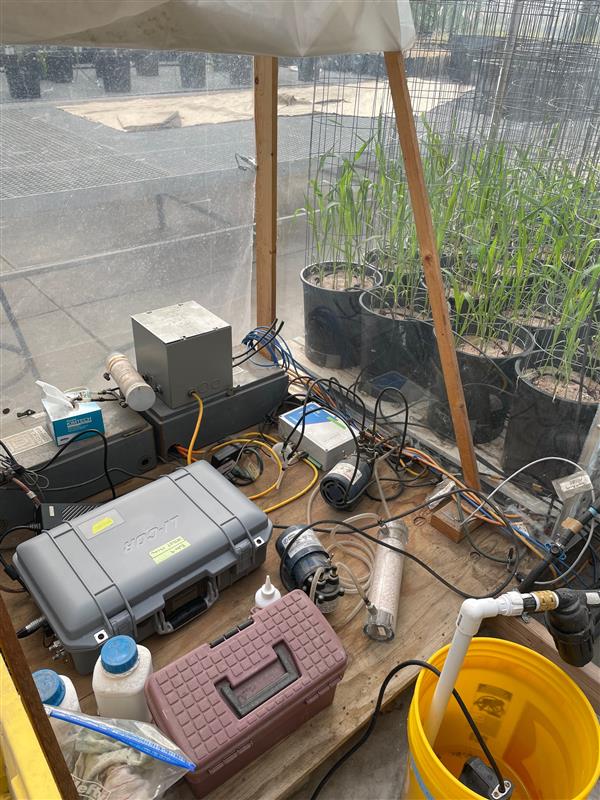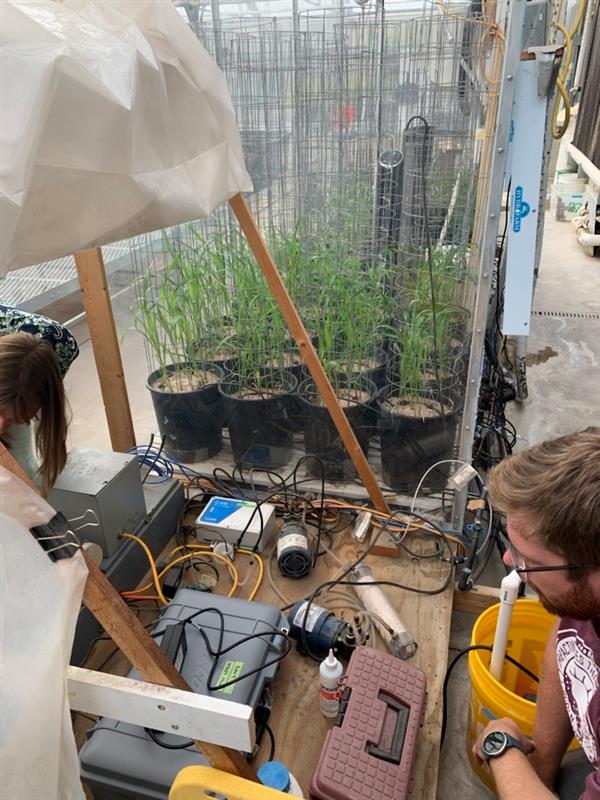Studying Plant and Soil Dynamics with CO2 Isotope Measurements
Michelle Haddix, Research Associate, and Aaron Prairie, PhD student, work in Francesca Cotrufo's Soil Innovation Lab at the Natural Resource Ecology Laboratory at Colorado State University in Fort Collins, Colorado. They tested the LI-7825 CO2 Isotope/NH3 Trace Gas Analyzer in several settings.
Haddix, who manages the lab, operates a CO2 isotope labelling growth chamber in a greenhouse. They seal plants in the chamber and pump CO2 enriched with 13CO2 into it, so the plants incorporate the 13CO2 into their biomass through photosynthesis. They connected an LI-7825 to the chamber with plastic tubing for a continuous measurement of 13CO2 from the air inside the chamber.
Haddix expected, given the constant pumping of 13CO2, that the 13CO2 values would also be constant. Instead, they showed an unexpected dynamic. “It seemed like the plants were not taking 12CO2 and 13CO2 at the same rate,” Haddix said, “there was a diurnal change. We would like to follow-up with plant physiologists to understand more of the photosynthetic pathway to see how it might be changing.”
Prairie focuses on the role of soil fauna in the formation of soil organic matter. Using leaf litter from the growth chamber with enriched 13CO2, and 15N enriched Hoagland's solution, he created soil microcosms using jars with lids and ports, and measures respiration by taking gas samples with a syringe. He manipulates the microcosms by adding and removing soil fauna—a diverse consortia of bacteria-feeding nematodes isolated from CSU Agricultural Research, Development and Education Center (ARDEC) soil and predatory mesostigmatid mites (Stratiolaelaps scimitus) as a biocontrol agent—and uses the labelled litter to track the carbon and nitrogen through the food web.
Prairie took syringe samples from his soil microcosms and injected them into the LI-7825. He compared his results to gas chromatography isotope ratio mass spectrometry (GC-IRMS), and the values were within the range he expected. His incubations continue running, and he uses the data with other information about the soil organic matter pools and the biomass of microbes and fauna to determine their effects on necromass formation and soil organic matter. “It's one piece of the puzzle,” he said, “but a critical piece.” Preliminary results indicate consistent differences in respiration between the treatments, with the microcosms that received nematodes having higher 13CO2 respiration than the control without nematodes.
They received further instructions from the LI-COR science and support team on how to integrate the LI-7825 with field soil chambers. The team appreciated that the LI-7825 is portable to the field, and also found the portability convenient in the lab.
Both Haddix and Prairie were grateful for the opportunity to test the LI-7825. For Prairie, who is familiar with LI-COR instruments, it was a seamless experience. Haddix appreciates that the LI-7825 revealed a new line of inquiry to pursue.

